Pest Management Strategies
Within this section…
Regional Pest Management Strategies
Pest species in Northland are identified in the Regional Pest Management Strategies (RPMS), published by NRC. The purpose of these strategies is to provide a strategic and statutory framework for the management of pest plants and animals. The primary objective is to achieve comprehensive and integrated management of pests in Northland.
Pest Plants
Each pest plant listed in the RPMS is given a management designation, which indicates whose responsibility it is to control that pest. The designations are as follows:
· Service Delivery – Pests with limited distribution or density. NRC is responsible for funding and implementing appropriate management programmes.
· Total Control – Pest plants in defined areas that land occupiers are required to treat whenever they appear on their land.
· Boundary Control – Pest plants in defined areas that land occupiers are required to treat in boundary situations in order to prevent spread to neighbouring properties.
· Quarry Control – Pest plants that owners or occupiers of quarries or metal stockpiles are required to control or eradicate to prevent spread via roading material.
· Roadside Control – Pest plants that road controlling authorities are required to clear from the region's road reserves.
· Community Control – Pest plants that have total control status within a designated Community Pest Control Areas. Land occupiers are required to control these plants according to an agreed management plan.
· Surveillance – Plants that pose a potential threat in Northland. NRC will seek to eradicate these species if identified in the region.
· Advice Only – NRC will provide advice only for these pests.
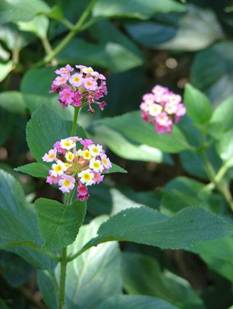
Photo: Pest plant Lantana – designated as ‘service delivery'
Service-delivery 2007-08
§ African feathergrass (Pennisetum macrourum) - of the 63 recorded sites in Northland, all were inspected during the 2007-08 survey season and 33 were found to be clear of new plants. This amounts to a 30% increase in the number of ‘clear sites' compared to the 2006-07 survey season.
§ Lantana (Lantana camara) – In total, the Council has inspected 500 sites in the Whangarei District, inspected and sprayed a number of sites in Dargaville and Te Kopuru urban areas and sprayed 300 sites scattered throughout the northern Kaipara District Council roading network. An intensive programme in the Far North was launched to detect all known lantana populations north of Pukenui. This was aimed at containing the advance of the species northwards. Over 200 sites were located and sprayed. Once initial control has been undertaken at a site it then becomes the land occupier's responsibility to maintain the site clear of Lantana.
§ Manchurian ricegrass (Zizania latifolia) – Throughout the region, 76 sites are included in the control programme. All sites are monitored twice a year and any regrowth is sprayed. Monitoring results show 16 sites were clear of regrowth in 2007-08. A further 42 sites had regrowth of less than 10% of the original infestation level. The remaining sites had regrowth of between 10% and 50%. A partnership contract with Biosecurity New Zealand was also entered into which will result in an expanded programme of control during the 2008-09 financial year.
§ Nassella tussock (Nasella trichotoma) – Nassella Tussock has been recorded from 39 properties in Northland. All sites were surveyed during 2007-08 and a total of 54 plants were found after intensive searching. This is an increase of 21 plants from 2006-07. A total of 24 properties which have had this plant controlled have now remained clear for four years.
§ Spartina – Spartina is present at 150 known sites in Northland, and covers an area of approximately 100 hectares. All of these sites, bar two, have now been sprayed at least once. Of the total area, 50 hectares now has nil or very minor regrowth. Major infestations are present in the Kaipara, Hokianga and Parengarenga Harbours, with smaller infestations present in the Bay of Islands, Houhora, Rangaunu, Mangonui and Whangaroa harbours and the Taipa River. The Spartina programme is ahead of target and the bulk of Spartina is expected to be eradicated well ahead of the programme's target date of 2020.
Total control 2007-08
§ Bathurst bur (Xanthium spinosum) – During 2007-08, 81 sites of Bathurst bur were inspected to ensure that property owners achieved complete control of all plants. There was generally good cooperation from landowners however some required a reminder letter.
§ Californian thistle (Cirsium arvense) – During 2007-08, five Californian thistle sites were inspected. A total of 24 sites were identified in 2006-07 and monitoring of these sites is still ongoing. The total number of sites is still increasing each year as new populations continue to be found.
§ Nodding thistle (Carduus nutans) – 72 sites of nodding thistle were inspected during the 2007-08 survey season to ensure that property owners achieved complete control. Due to the short seed life of this species, and cooperation of landowners, it is hoped that eradication of this species can be achieved in the medium term on most sites.
Boundary, roadside and quarry control 2007-08
Boundary control enquiries received during the 2007-08 financial year mainly involved requests for information or advice on regulatory requirements and control mechanisms. In addition to enquiries relating to boundary control, the Biosecurity team also received a number of complaints relating to the presence of pest plants on property boundaries. All complaints were responded to within five working days and boundary clearances enforced.
Roadside weed clearance is progressing with the three district councils implementing control programmes in accordance with the RPMS. The objective is to ensure that one fifth of the areas included in the district council and Transit NZ five year roadside management plans are cleared of broom (Cystisus scoparius), gorse (Ulex spp.), pampas (Cortaderia spp.), privet (Ligustrum spp.) and wild ginger (Hedychium spp.) by the end of the plan period.
All operating quarries were inspected during the 2007-08 financial year and most sites were found to be implementing control activities as specified in the RPMS.
Surveillance 2007-08
Twelve plant species have been identified as posing a potential threat in Northland. These 12 pest plants have a "very high" national pest status and have either never been found in Northland or are rarely found in Northland. One plant, evergreen buckthorn (Rhamnus alaternus) is known at one site in Northland and during the 2007-08 financial year, contractors spent two weeks clearing the core of the site and eradicating outlier populations. The aim is to eventually eradicate this species from the site entirely.
As part of a national collaboration between the Nursery Association and local and central Government, NRC Biosecurity staff annually inspect plant nurseries and other plant retail outlets to check for plants that are banned from sale and distribution under the Biosecurity Act 1993. No unwanted organisms were found in any establishment during 2007-08.
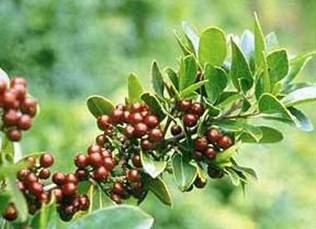
Photo: Evergreen buckthorn
Invertebrate Pests
Guava moth
The guava moth (Coscinoptycha improbana), a native of Australia, has a voracious appetite for the fruit of many Northland trees – feijoa in particular. They were first found in Kaitaia in 1997. Since then, NRC has been involved in monitoring the spread and distribution of guava moth in the region. In 2004, guava moth were found to be well distributed throughout Northland. NRC received several calls from orchardists during 2007-08 in infested areas wanting to learn more about how to control this pest species.
The Council has produced a pamphlet to assist identification and management of guava moth, which is available on the NRC website – http://www.nrc.govt.nz/Resource-Library-Summary/Publications/Pest-insects/.
Tropical grass webworm
The tropical grass webworm (Herpetogramma licarsisalis) has caused severe pasture damage in the Far North. In the last major outbreak in 1999, five hectares of paddock were completely chewed out in less than 48 hours. Caterpillars were recorded at 1500 per square metre, equivalent to 15 million per hectare.
NRC operates an annual monitoring programme on Far North properties. Monitoring is undertaken over the summer months (December-April) and involves installing pheromone traps to capture the adult moths and undertaking weekly counts of webworm larvae at four separate sites to determine the number of larvae per square metre. The counts are then used to determine the number of larvae and adults present at each site, which can be used to pre-empt a heavy infestation of webworm. If farmers are pre-warned of an imminent outbreak, it enables them to instigate management practices that can lessen the impact of an infestation.
In addition to annual monitoring, detailed weather data, including rainfall and hourly temperature recordings, is also collected by the Council and the potential risk of pasture damage is reported to farmers on a regular basis, recorded in the Kaitaia-based ‘Northland Age' newspaper and on the NRC website.
Over the summer of 2007-08, moths caught per pheromone trap peaked at 40. A peak of 35 larvae per square metre was recorded at one site during April 2008. Feeding damage by tropical grass webworm during the summer/autumn of 2008 was the worst seen since 1999 and began as early as February, most likely as a result of favourable weather conditions. Spring through to autumn was characterized by consistently moist, warm and humid weather, which produced favourable conditions for kikuyu growth and build-up of webworm populations. Farmers were advised to harrow affected areas, if feasible, to break up the thatch and increase the risk of desiccation to developing larvae. Similar monitoring will continue next financial year.
Gum leaf skeletoniser
The gum leaf skeletoniser (Uraba lugens) is an Australian insect that attacks the foliage of trees, in particular gum tree (Eucalyptus sp.), causing significant damage. Monitoring of this species has shown that it is now widespread in the greater Auckland region. NRC works in collaboration with HortResearch, Biosecurity NZ, and Ensis to monitor the distribution and spread of this insect in the Northland region.
In March and April 2006, 60 pheromone traps where deployed on eucalyptus trees at high risk sites throughout the region. Of the 60 traps, only four had any moths which resembled the gum leaf skeletoniser. These are currently being formally identified. To date, the gum leaf skeletoniser has not been identified in Northland. The monitoring undertaken by the Council is not routine and no further monitoring was conducted during 2007-08 however further monitoring will be undertaken as required.
Pest ants
Pest ants, in particular the Argentine ant (Linepithema humile), have become a significant pest issue in Northland in recent years. The majority of known records of this species come from the region's urban centres. However, a survey of 14 significant ecological areas undertaken in 2006 did return one positive record. Due to the slow natural rate of spread of this species (200m/annum), it is highly likely that small populations may have been missed outside areas previously surveyed.
Future monitoring of this species will include surveillance monitoring at entry points into the region, for example, ports and marinas, and surveys of significant ecological and economic areas, where the potential impact of a pest ant incursion is high.
Pest Animals
As with pest plant species, each animal pest listed in the RPMS is given a management designation, which indicates who is responsible for managing the pest. The current designations are as follows:
· Service Delivery – Pests with limited distribution or density. NRC responsible for funding and implementing appropriate management programmes.
· Cost Recovery – NRC control on a cost-recovery basis where landowners have requested control works to be undertaken.
· Community Control – Pests controlled in designated areas where land occupiers are required to control selected pests to levels specified in a management plan.
· Surveillance – Species that pose a potential threat. The public are encouraged to report sightings to NRC and NRC is responsible for implementing surveillance and control work if and when found.
NRC's achievements to date in terms of animal pest management include:
· Completing a ‘once-over' control programme in the region for possums.
· In association with the Department of Conservation, reducing wild Sika deer in Northland to one population, which is located in Russell forest.
· Establishing approximately 15,505ha of Community Pest Control Areas for continuous control of pests, including possums, rats and mustelids.
· Assisting Northland's landowners with free advice and discounted poisons and traps, to assist them with their pest problems.
Over the past few years, NRC has moved in a new direction in terms of pest animal control. The focus of NRC's work is moving from a single-species, targeted approach to an integrated pest management approach, where a number of pest species are controlled over a smaller area. This approach has developed out of a realisation that by controlling a single species, it can encourage other pest species to flourish and so a more integrated approach to pest management is required. NRC is now focusing on assisting community groups and landowners who are committed to protecting economic, biodiversity and/or cultural values.
Wild deer
Wild deer pose an environmental and economic threat to Northland. If left uncontrolled, wild deer would spread to occupy all available habitats and deer browsing would have a severe detrimental impact on the region's natural environment. In addition, wild deer are a known vector for bovine tuberculosis. The spread of these animals across Northland would therefore have a severe impact on the region's dairy industry and farming economy.
Northland has been historically deer free. However, increasing wild deer populations have sparked a move by NRC, DOC and the Animal Health Board to eradicate all wild deer populations in the region and halt their dispersal by working with deer farmers to prevent farm escapes. In addition, "prohibited deer farming areas" have been established in and around ecologically sensitive areas in the region to prevent populations becoming established from farm escapes (see map below). As a result of this multi-agency, co-ordinated approach, Northland remains largely deer free.
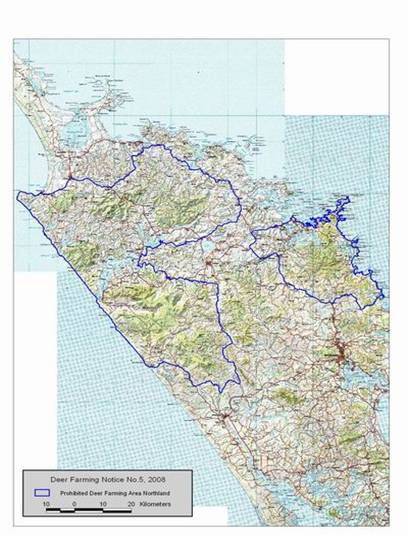
Map: Prohibited deer farming areas in Northland
Wild goats
A five-year plan to reduce the number of wild goats in the Whangarei District has been developed by DOC and NRC, with the aim of controlling wild populations and preventing a re-invasion of land of high ecological value. In the late 1980s and early 1990s, these organisations undertook a major knockdown of goat populations in the region but since this time, goats have slowly re-colonised many areas of natural habitat and are again becoming a conservation issue.
There are four strategic objectives of the plan:
· To achieve knockdown of goat populations within Whangarei District to low levels;
· To ensure wild goats on priority sites are maintained at low levels or eradicated;
· To raise awareness of wild goat issues in the Whangarei District; and
· Ensure new goat populations do not establish outside existing populations.
This will be achieved by employing a "deer response team" who will target each habitat by year and who will undertake ground and aerial hunting, public relations, pre and post animal density surveys and the mapping and gathering of data. It is proposed the plan will begin in Pukenui forest in the first year.
Marine biosecurity
Marine biosecurity is a worldwide issue, which can affect the economy, environment and society of an affected country. As an island nation, New Zealand is particularly vulnerable to new invasive marine species, especially given the country's reliance on shipping as a means of trade (it is widely recognised that shipping vessels are the most common vector that aids in the transportation of non-indigenous marine species) and the high visitation rates of overseas vessels.
Northland, with its warm seas, high levels of sunshine and tropical weather patterns provides an ideal environment for marine pests. The constant influx of overseas vessels to the region provides an ideal vector for the transmission of such organisms.
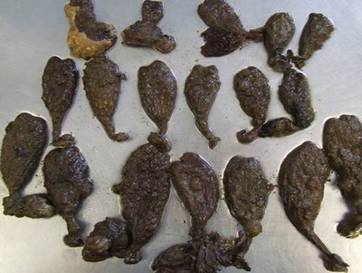
Photo: The highly invasive sea-squirt, Styela clava, recovered from Marsden Cove Marina
NRC is concerned about the ecological, economic and social impacts of invasive species on the marine environment in Northland and as such, is currently researching the best options for monitoring and control of these organisms. One idea being considered is the designation of "high value marine sites" as "pest-free areas", which would be regularly monitored. If pests were discovered in these areas, NRC would be able to respond quickly and efficiently to the threat. "Pest-free areas" would be selected based on proximity to marine areas of ecological significance.
Community Pest Control Areas
One of the aims of the Council's Pest Management Strategies is to encourage the community to become involved in integrated pest management. The main mechanism for facilitating this involvement is the development of a network of Community Pest Control Areas (CPCAs) around the region.
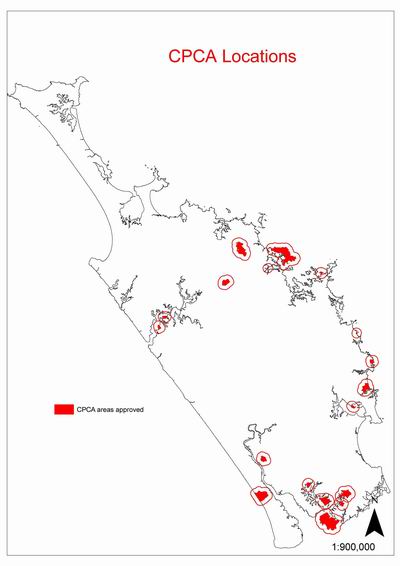
Map: Existing Community Pest Control Areas in Northland
CPCAs are areas that have been identified by the community as worth protecting. For these areas, a list of pests for control is drawn up and a management plan is developed, which details how these pests will be controlled. In Northland, the main focus of CPCAs tends to be pest mammals, such as possums, however in some areas the community has identified pest plants as being the biggest threat to ecological values.
Each proposal for establishing a CPCA must be put to the Council for consideration and is accompanied by staff recommendations. If the Council resolves to establish a CPCA, the pests defined in the proposal become ‘total control pests', requiring the landholder to follow a set programme of control following an initial knockdown.
In Northland to date, 17 CPCAs have been approved, with several more pending or in negotiation with local communities. Many hundreds of people are now involved as property owners, or have willingly signed up to ongoing maintenance of low pest numbers. In 2005-06, Council adopted a new Community Control Pest Plant Strategy to promote integrated pest management and to channel more Council funding into pest control within CPCAs.
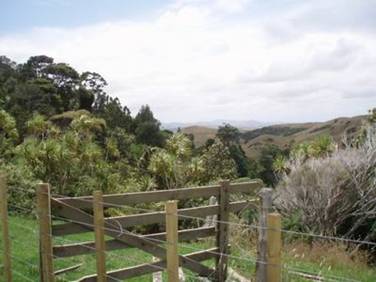
Photo: Community Pest Control Area at Onerieri
Enquiries
NRC Biosecurity and Pest Management officers responded to 833 enquiries from the general public during the 2007-08 financial year. The majority of enquiries received related to requests for information on, or help with, pest management, including possum, Argentine ant and rabbits. There were also requests for advice on a wide variety of other animal and insect pest species, weed eradication and identification of pest plants and invertebrates.
